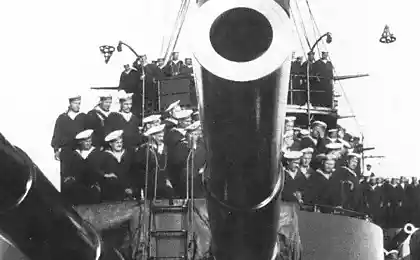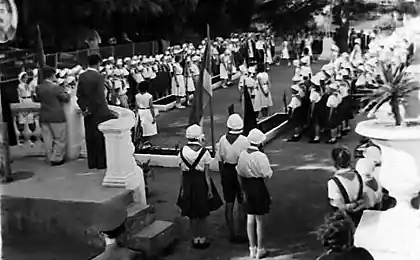2881
Chinese New Year 2013 (24 photos)
Two days ago, came into its own Chinese New Year 2013 - Year of the Black Water Snake on the lunar calendar.
This holiday is celebrated in many Asian countries, primarily - in China.
The festivities will last for 15 days, so who wants to get acquainted with ancient oriental culture, can manage to do it.

As already mentioned, the celebration of the Chinese New Year begins on the first day of the new moon and lasts for 15 days - until the full moon.
Beijing, February 9, 2013. (Photo by Feng Li | Getty Images):

Chinese New Year, which, after 1911, in the literal translation is called "Spring Festival", since ancient times is the main and longest holiday in China.
Preparing for the next presentation in Beijing on February 11, 2013. (Photo by Kim Kyung-Hoon | Reuters):
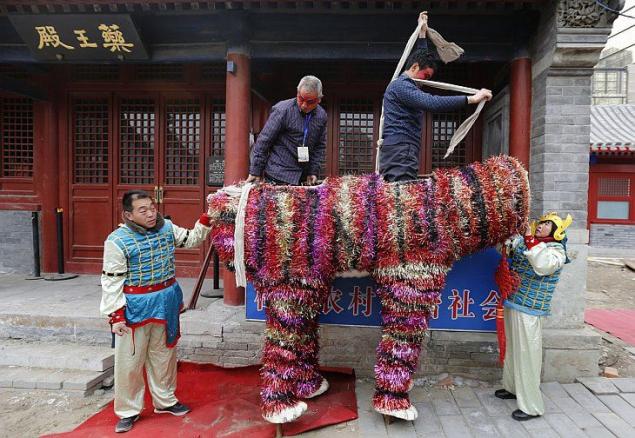
Of course, the Chinese New Year is celebrated not only in China but also in other countries. This, for example, sets in Chinatown in Singapore, January 29, 2013. (Photo by May Naji | Reuters):
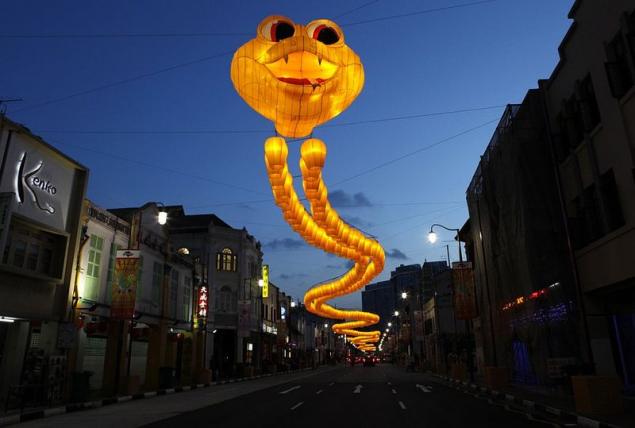
Penang Island, Malaysia, February 6, 2013. (Photo by Gary Chuah | AP):
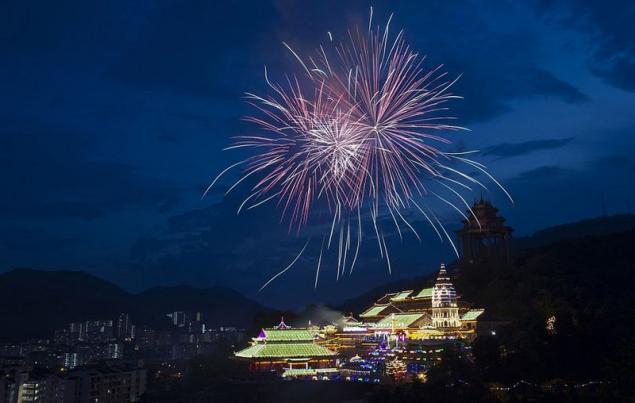
Parade in London on February 10, 2013. (Photo by Tal Cohen | EPA):
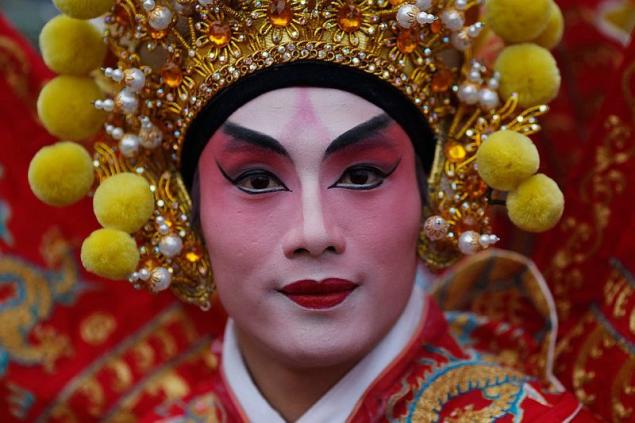
Therefore, in China the New Year twice: in the Gregorian calendar (January 1), and the lunar calendar - "Chinese New Year».
Chinese New Year 2013 in Sichuan Province in southwest China. (Photo: AP):

Preparation of a Buddha statue to the New Year, North Sumatra, Indonesia on February 5, 2013. (Photo by Dedi Sahputra | EPA):
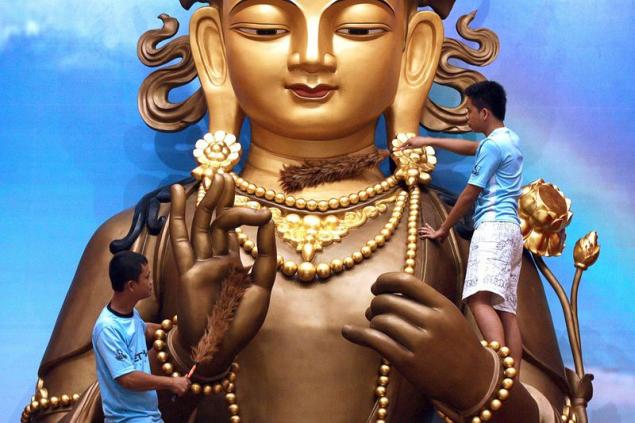
Every New Year is associated with one of the 12 animals and one of the five elements. At this time in 2013 became a symbol of Black Water Snake. This creature, according to the eastern calendar, is a symbol of wisdom and prudence.
Chinese actor shows some fancy tricks with a snake, Beijing, February 11, 2013. (Photo by Petar Kujundzic | Reuters):
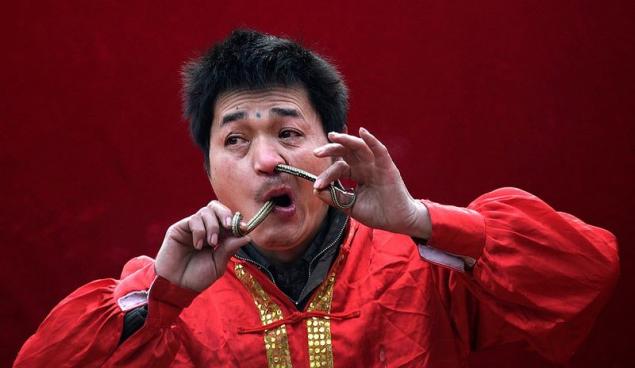
Every Chinese New Year celebration is accompanied by the launch of fireworks and burning of various spices. (Photo by Reuters | Stringer):
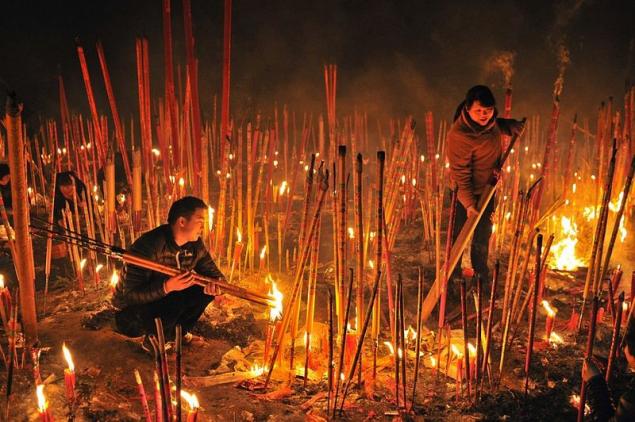
(Photo by Ed Jones | AFP | Getty Images):
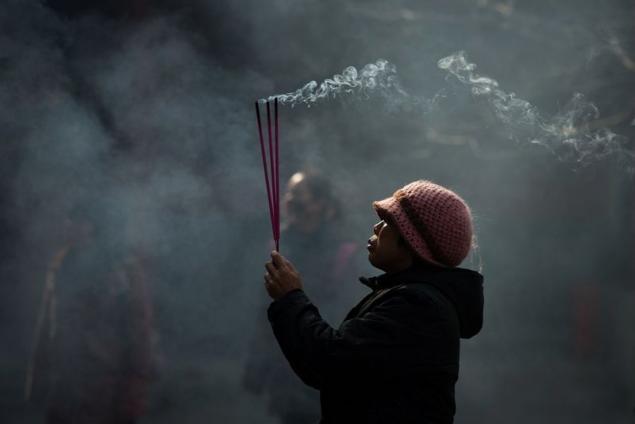
According to legend, evil spirits expelled from different places, looking for a new home, settle in it and the coming year bring different owners woes. Ignition on New Year's fireworks should scare away evil spirits and attract the spirit of peace, tranquility and happiness.
Fun on the streets of Beijing on February 10, 2013. (Photo by Ed Jones | AFP | Getty Images):
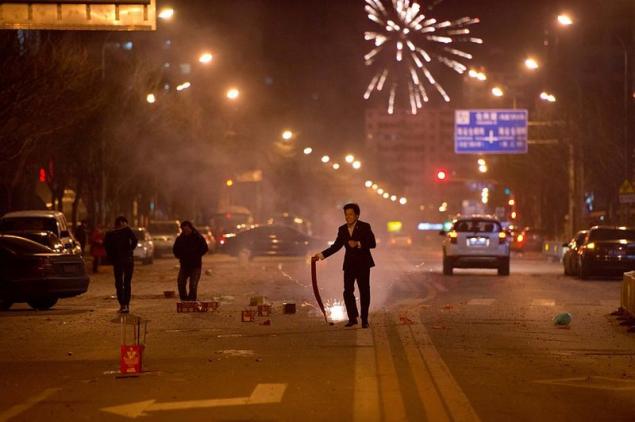
Fire Dragon Dance in Beijing on February 10, 2013. (Photo by Reuters | Kim Kyung-Hoon):
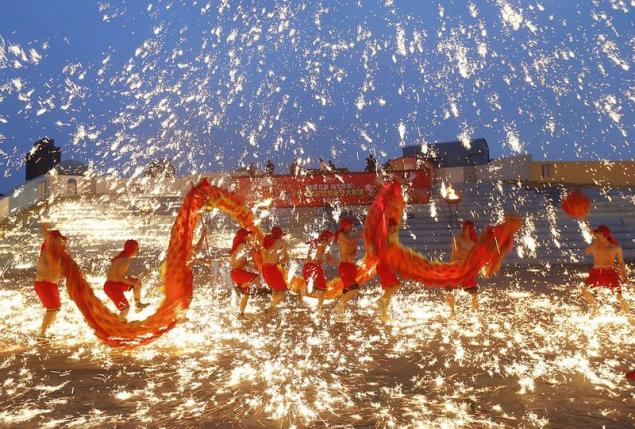
By the way, instead of putting the Christmas tree Chinese orange tree on which hung the red envelopes with money that was in the house of wealth.
Dragon dance. Chinese New Year 2013 in Phnom Penh, Cambodia, on 9 February. (Photo Samrang Pring | Reuters):
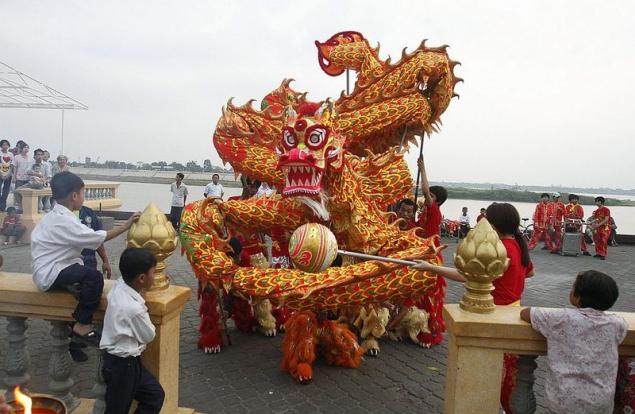
Burning incense, Beijing, February 11, 2013. (Photo by Ed Jones | AFP | Getty Images):
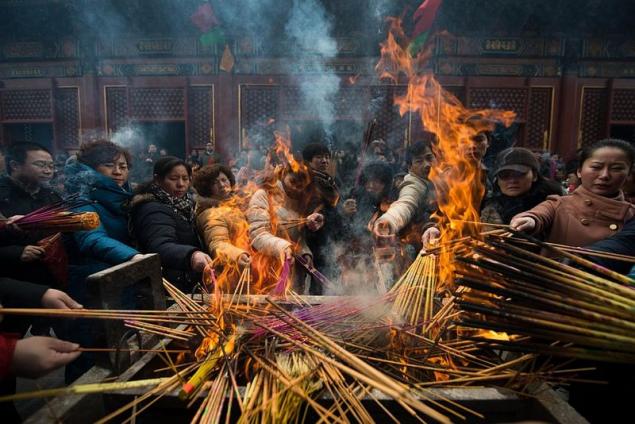
Also, there is a belief that evil spirits are afraid of red, so the New Year's Day throughout the predominant red color.
Red lanterns in perks in Beijing, February 9, 2013. (Photo by Feng Li | Getty Images):
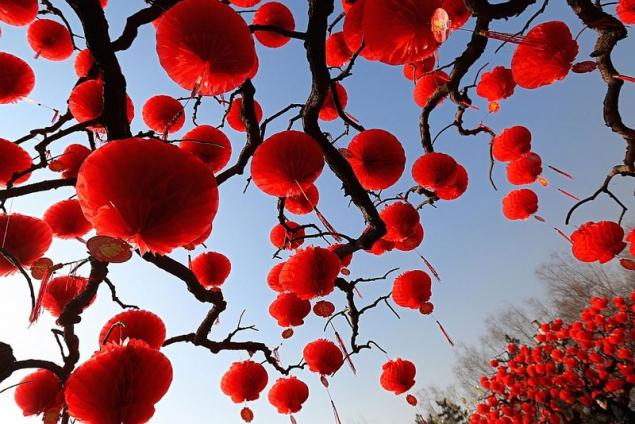
Dragons everywhere, even in an aquarium with water, Beijing February 10, 2013. (Photo by Feng Li | Getty Images):
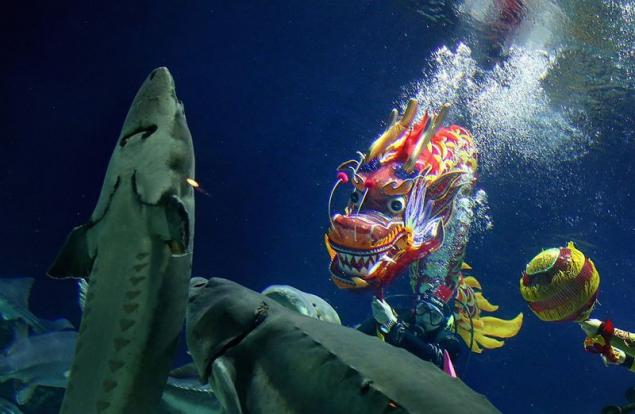
Another tradition of the Chinese New Year - launch into the sky lanterns. (Photo by Olga Maltseva | AFP | Getty Images):
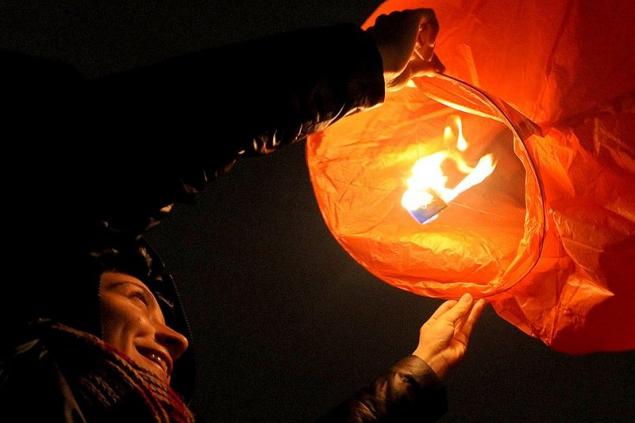
Souvenir shop in Hong Kong. (Photo: Philippe Lopez | AFP | Getty Images):
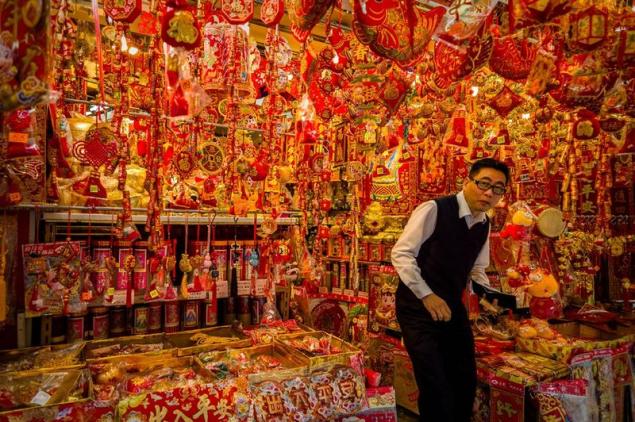
Incidentally, despite our otherness, in the tradition of Chinese and Russian have much in common: at the heart of the festival - the feast.
Fireworks in Shanghai, February 9, 2013. (Photo by Carlos Barria | Reuters):
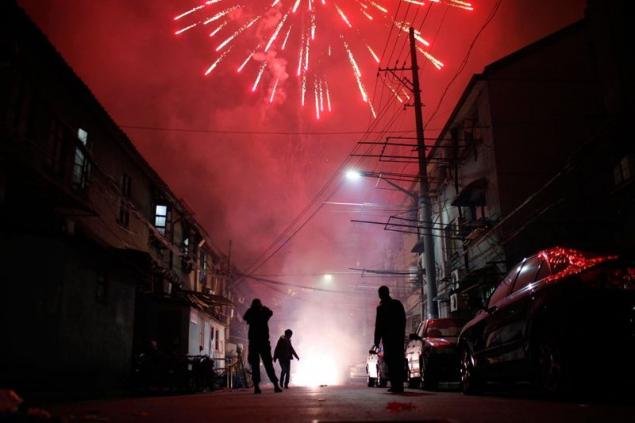
Shanghai, Feb. 9, 2013 / (Photo by Carlos Barria | Reuters):
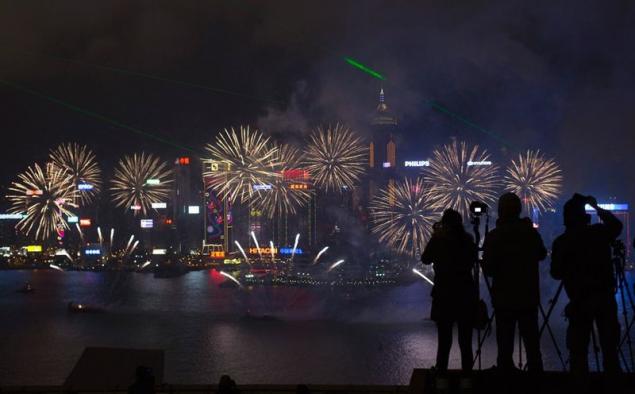
2013th year, though the Black Water Snake, but in jewelry stores more profitable to sell gold. For example, in Hong Kong, this is $ 25,800 (380 grams). (Photo: Kin Cheung | AP):
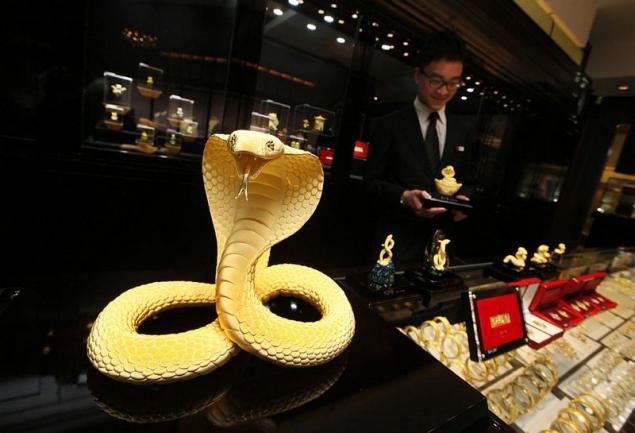
Another similar tradition - giving gifts, wish each other health and successful year. And one hopes that in 2013 it all come true.
Chinese New Year 2013 in Hong Kong, February 11. (Photo: Philippe Lopez | AFP | Getty Images):
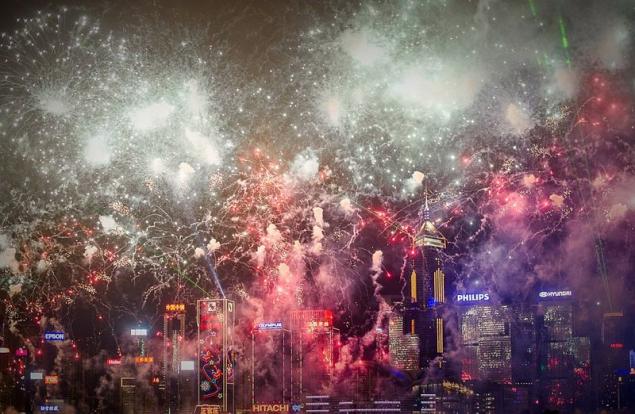
Chinese New Year 2013 in Hong Kong, February 11. (Photo by Vincent Yu | AP):
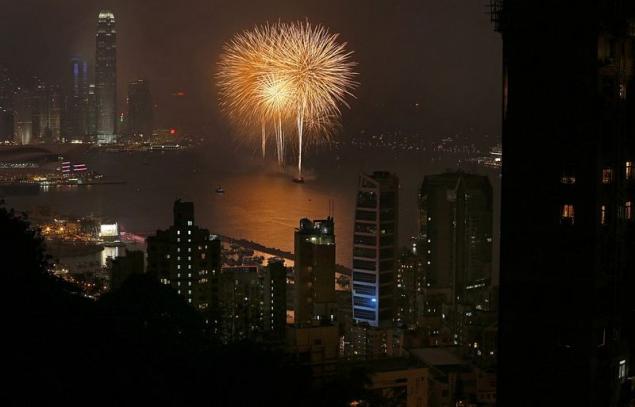
Source: loveopium.ru
This holiday is celebrated in many Asian countries, primarily - in China.
The festivities will last for 15 days, so who wants to get acquainted with ancient oriental culture, can manage to do it.

As already mentioned, the celebration of the Chinese New Year begins on the first day of the new moon and lasts for 15 days - until the full moon.
Beijing, February 9, 2013. (Photo by Feng Li | Getty Images):

Chinese New Year, which, after 1911, in the literal translation is called "Spring Festival", since ancient times is the main and longest holiday in China.
Preparing for the next presentation in Beijing on February 11, 2013. (Photo by Kim Kyung-Hoon | Reuters):

Of course, the Chinese New Year is celebrated not only in China but also in other countries. This, for example, sets in Chinatown in Singapore, January 29, 2013. (Photo by May Naji | Reuters):

Penang Island, Malaysia, February 6, 2013. (Photo by Gary Chuah | AP):

Parade in London on February 10, 2013. (Photo by Tal Cohen | EPA):

Therefore, in China the New Year twice: in the Gregorian calendar (January 1), and the lunar calendar - "Chinese New Year».
Chinese New Year 2013 in Sichuan Province in southwest China. (Photo: AP):

Preparation of a Buddha statue to the New Year, North Sumatra, Indonesia on February 5, 2013. (Photo by Dedi Sahputra | EPA):

Every New Year is associated with one of the 12 animals and one of the five elements. At this time in 2013 became a symbol of Black Water Snake. This creature, according to the eastern calendar, is a symbol of wisdom and prudence.
Chinese actor shows some fancy tricks with a snake, Beijing, February 11, 2013. (Photo by Petar Kujundzic | Reuters):

Every Chinese New Year celebration is accompanied by the launch of fireworks and burning of various spices. (Photo by Reuters | Stringer):

(Photo by Ed Jones | AFP | Getty Images):

According to legend, evil spirits expelled from different places, looking for a new home, settle in it and the coming year bring different owners woes. Ignition on New Year's fireworks should scare away evil spirits and attract the spirit of peace, tranquility and happiness.
Fun on the streets of Beijing on February 10, 2013. (Photo by Ed Jones | AFP | Getty Images):

Fire Dragon Dance in Beijing on February 10, 2013. (Photo by Reuters | Kim Kyung-Hoon):

By the way, instead of putting the Christmas tree Chinese orange tree on which hung the red envelopes with money that was in the house of wealth.
Dragon dance. Chinese New Year 2013 in Phnom Penh, Cambodia, on 9 February. (Photo Samrang Pring | Reuters):

Burning incense, Beijing, February 11, 2013. (Photo by Ed Jones | AFP | Getty Images):

Also, there is a belief that evil spirits are afraid of red, so the New Year's Day throughout the predominant red color.
Red lanterns in perks in Beijing, February 9, 2013. (Photo by Feng Li | Getty Images):

Dragons everywhere, even in an aquarium with water, Beijing February 10, 2013. (Photo by Feng Li | Getty Images):

Another tradition of the Chinese New Year - launch into the sky lanterns. (Photo by Olga Maltseva | AFP | Getty Images):

Souvenir shop in Hong Kong. (Photo: Philippe Lopez | AFP | Getty Images):

Incidentally, despite our otherness, in the tradition of Chinese and Russian have much in common: at the heart of the festival - the feast.
Fireworks in Shanghai, February 9, 2013. (Photo by Carlos Barria | Reuters):

Shanghai, Feb. 9, 2013 / (Photo by Carlos Barria | Reuters):

2013th year, though the Black Water Snake, but in jewelry stores more profitable to sell gold. For example, in Hong Kong, this is $ 25,800 (380 grams). (Photo: Kin Cheung | AP):

Another similar tradition - giving gifts, wish each other health and successful year. And one hopes that in 2013 it all come true.
Chinese New Year 2013 in Hong Kong, February 11. (Photo: Philippe Lopez | AFP | Getty Images):

Chinese New Year 2013 in Hong Kong, February 11. (Photo by Vincent Yu | AP):

Source: loveopium.ru













